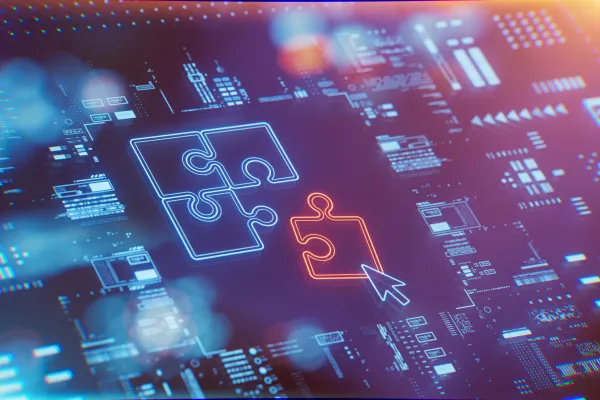Asset managers are getting more sophisticated in the ways they are using artificial intelligence to help create research and due diligence on potential investments.
Managers have long used AI for things like sentiment analysis and to quickly find relevant information and patterns in quarterly earnings reports. But now customized platforms have emerged that screen new sources of data on potential companies, streamlining and speeding up the process of due diligence. Reports and summaries on investments can then be produced in a fraction of the time that a human could do the same task.
This in turn allows analysts and portfolio managers to reallocate their time to face-to-face client interactions or servicing existing relationships and investments, according to officials. Several portfolio managers told II that they already do or intend to take advantage of the technology in this way.
One portfolio manager told of how he had used an AI-driven research tool to generate information on a recent event in the Treasury market and how it might impact existing investments, something he said would previously have taken a junior analyst at least two weeks to produce. AI did it in “a matter of minutes.”
The manager was quick to add that this simply freed up that analyst’s time to do an “endless supply” of “more important work.” Although this appears to be the industry's stock answer to any question about the effect of AI on employees, the manager later said the firm – a high-profile asset manager – also had plans to hire fewer junior analysts in the year to come. But he insisted there is no direct connection between the use of AI and less hiring.
Other asset managers have developed their own systems for this type of analysis. Schroders Investments, for example, has an internal system known as the Generative AI Investment Analyst (GAiiA) platform, which everyone on the team involved in private equity and co- or direct-investments has had access to initially and can interact with, and is being made available to every investor across the board.
The tool can help to create a draft investment memo. A human analyst will then verify the information, do additional analysis, and finalize the document, which is then submitted to the investment committee. The AI research is based on specific documents that are provided to the tool, which significantly reduces the risk of so-called “hallucinations.”
Like similar tools, it has been trained to always include sources showing where information was taken from to help with verification. Investment professionals can also use the tool to probe the original document and dive deeper into or verify certain aspects, or to update and regenerate the initial graphs it produced based on additional user input.
“The main purpose of this is about consistency, quality of the analysis and of the investment decision-making,” said Nils Rode, CIO of Schroders. “There is some productivity gain because these tools can do things that humans cannot. Our colleagues can now use these tools, but this is not at all about replacing people.”
The skill level and experience of private equity investment professionals remains superior to what any AI can do today or in the future, he added, saying the tool is simply an “accelerator” in a process that still needs human verification.
“There is still a lot to be done for anybody on the investment team, but it's also similar to a promotion for anybody using the tool in the sense that they can focus on the more interesting things,” he said. “So that's why this has been fully embraced but is not replacing anybody.”
A firm with the size and resources of Schroders can develop its own AI, but this is a luxury only afforded by those of a certain scale. Companies like martini.ai are forming that are seeking to bridge that gap. Specialists in corporate credit research, the martini.ai offering has certain costs for upgraded services, but essentially offers free research and insights into companies’ credit risks.
Rajiv Bhat, co-founder and CEO, said that the product helps analysts in this specific part of the industry that are “drowning doing the same kind of analysis over and over again,” including doing financial models and creating credit scores and reports.
One function of martini.ai is the ability to input a portfolio and quickly assess how it would likely perform in the instance of a difficult scenario, an invasion or geopolitical event say, with expected losses and changes reported in real time.
"This not only helps analysts and portfolio managers do what they're doing much, much faster, but also handle a whole new set of instruments better than they were ever able to access before,” he said.







